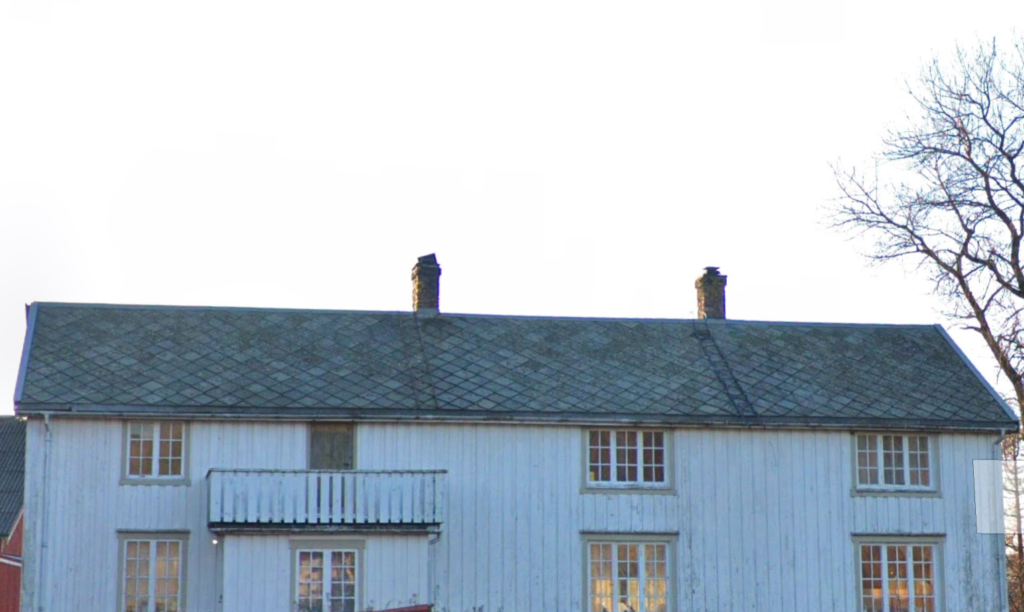
The old roof on the main building (the trønderlån) was a slated roof; classical slates from Alta in Northern Norway, designet to last for eternity. We were not planning to replace the slates on the Southern side, but here on the Northern side most of the slates had to come off, and we even needed more slates, because of the extension that we built instead of this square box with a balcony on top, placed there sometimes in the fourties (cf. the painting on the front page, cf. also below).
The old building was originally built in an L-shape (cf. the post about the buildings and structures), and when this L-wing was demolished during the same renovation, the valuable Alta-slates were of course carefully stacked and stored. One might think therefore that there would be ample reserves of slates. But as luck would have it, our eldest son at the age of five was gifted a small, but truly efficient hammer by his grandfather.
Where is one to try out one's new hammer? Can you imagine how brittle these slates really are when placed in a stack like this? Do you understand how merciless and highly efficient a five-year-old can be when left alone for a few minutes without any bothersome adults around?

«To a man with a hammer, everything looks like a nail.» Mark Twain.
This treasure was therefore lost to us, and we did not have enough slates. Also, if we were to keep the old slated roof, all the slates on the Northern side had to come off and be thoroughly steamed before we could reuse them. There was a lot of moss and guano stuck to the slates after decades and decades. If we were to buy more slates, they would be old and used too, and we would obviously have to steam all of the "new" slates as well. It sounded like a terrible job. Also, it would be very expensive, more so than a brand new roof with modern roof tiles, since we needed to get hold of an expert to lay down the slates. All this would also take a lot of time.
And when do we get the necessary stretch of nice weather with no precipitation, here where we live?
Also, if we decided to remove all the slates on the northern side of the roof, the wooden part of the roof would have to be replaced as well. This would also take a lot of time, but it would not be very smart to skip this step and place the slates on top of old woodwork in less than minty condition. We do want this roof to last.
A lot of work, a lot of time, a lot of money.
Those are all good reasons to consider other solutions and to rather replace the slated roof with Dutch roof tiles. On the other hand: to be frank, all of us really wanted to keep the precious slated roof. It is really beautiful, it is old and original, and if restored correctly, it can easily last for a hundred years or more.
The people of the farm finally decided. Let's do it!
So first of all the old slates have to come off.
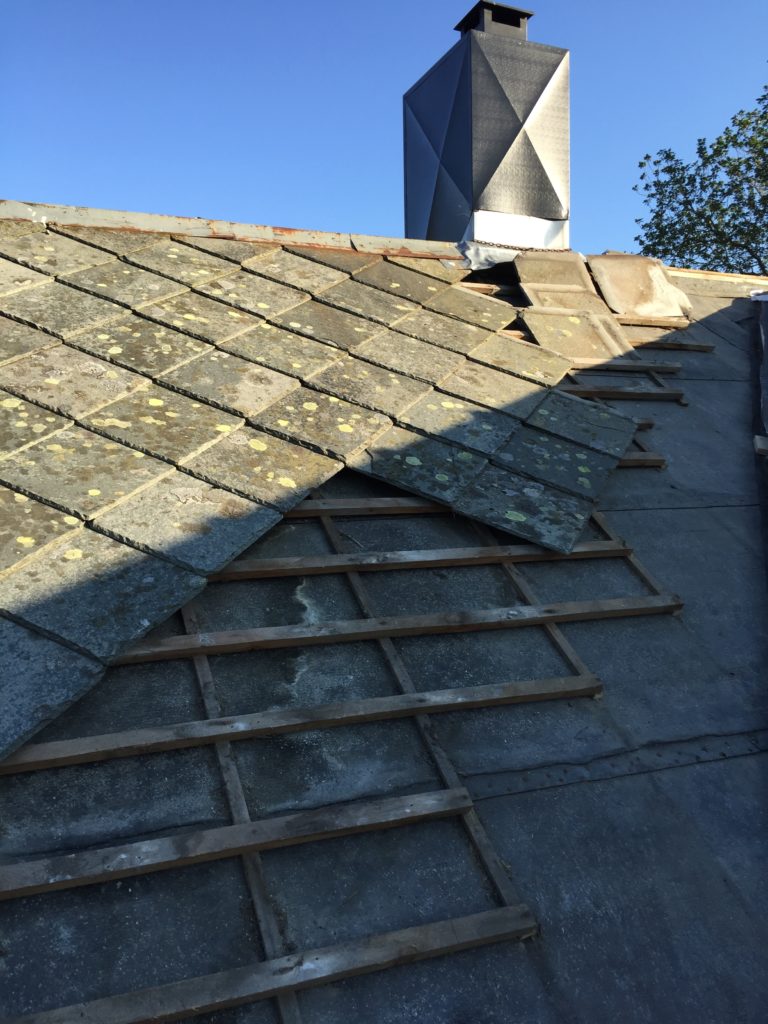

Peeling off the slates, one by one, is time-consuming work, and you have to be very careful. If you are not, or do things in the wrong order, the brittle edges and the nicks where the nails attch the slates to the roof will break off. This would make that slate useless. As mentioned, it is a far drop down, so you can easily drop a slate which will then shatter on the ground. It is also a very demanding job with a lot of responsibility.
The slates must then be brought down from the roof without breaking, and carefully placed on a suited surface to be steamed, inch by inch. This has to be done very thoroughly, but very lightly, since otherwise the slates will break and become useless. A lot of slates in the first stack did not make it (it took us a while to master the right technique).
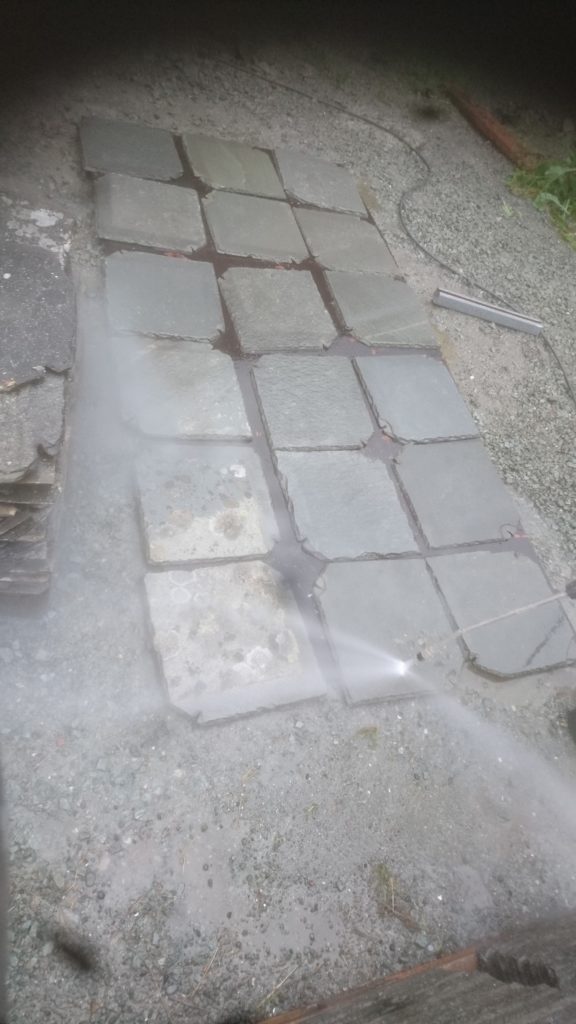
Before and after. Kristin is steaming the slates, inch by inch, removing centuries worth of moss, guano and dirt.
Luckily we already had an appropriate steamer on the farm.
This work was very time-consuming, and it took us every night for many weeks to finish the stacks. These slates have a lot of sides and edges, and all of them have to be cleaned and steamed. As already said, if you are not very careful you can easily damage the slate.
It might seem as if we put the slates directly on the ground, but they are safely resing on a sheet of waterproof plywood. Placing the slates directly on the ground would lead to a lot of dirt being whirled up.

Hans managed to buy some more used slates from a local farmer who was replacing his own slated roof with tiles. After Kristin and Hans had steamed all the slates on almost all the stacks, the slate expert roofer informed us that the slates were of the wrong kind. 75% of the additional slates were Otta-slates, not Alta-slates. Besides the fact that Otta-skifer is thicker, heavier, and more rouchly cut, the nicks are also placed in a different position. So we had a lot of clean, but useless slates.
A rahter long, frustrated and desperate silence occurred in the aftermath of this devastating piece of information.
Now, Hans is relatively optimistic by nature and has an uncanning ability to consider the glass half full. So he declared that "this means that we have slates for the roof at Nordstua (the yellow house on the painting), when we are renovating that house."
The roof slate expert acquired some more use slates from a different supplier, and here we go, start up the steam machine again.
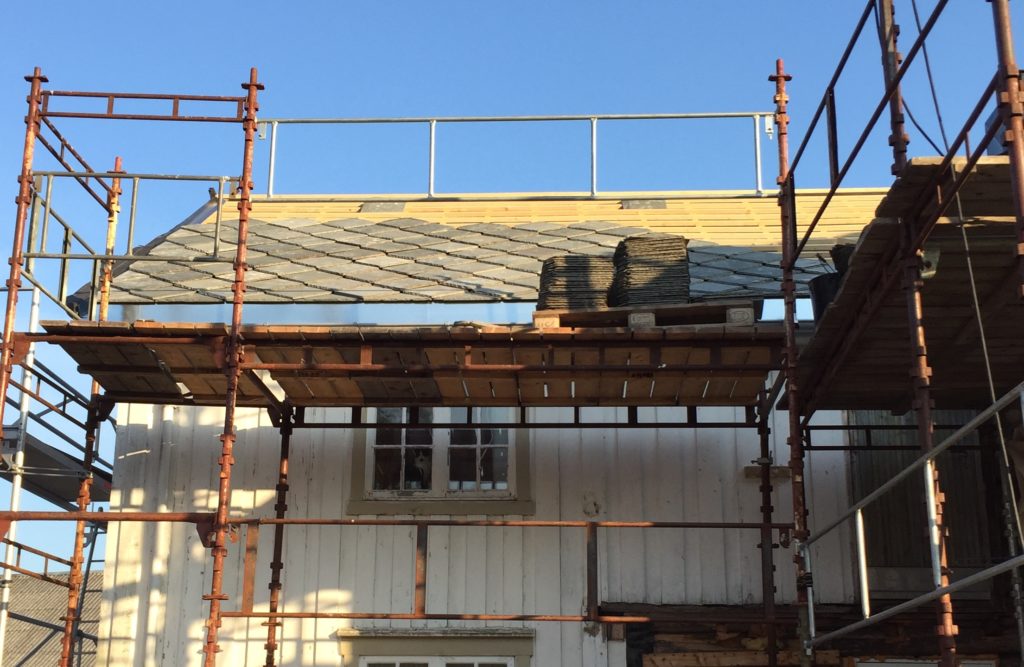
Eventually we had enough clean slates to cover the roof on the northern side, including the extension. And then the slates must be restacked, and the stacks brought back up on the scaffolding, preferably withouth breaking one single slate.
I think we all have to agree that this is an incredibly beatiful roof, very mcuh suitable for a trønderlån. What do you think? There are still some whhite spots of guano here and there, but these are so deeply entrenched in the slate that to remove these, one would have to damage the slate.
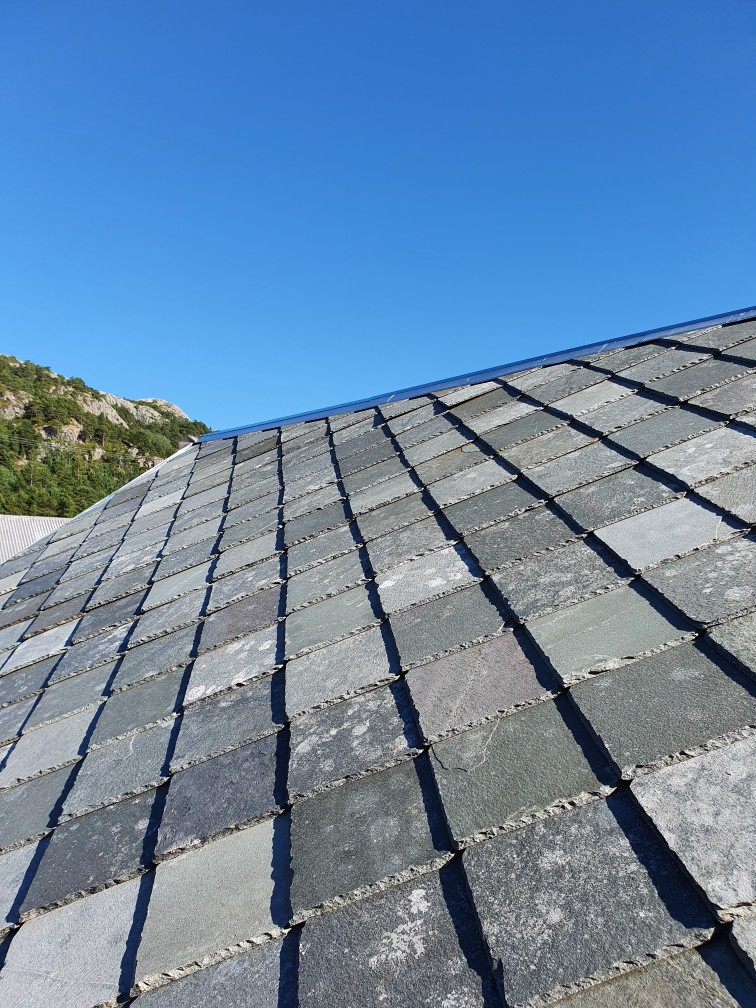
Actually we should have had a celebration, because the roof is finally finished. Let us try to have a party in the near future!
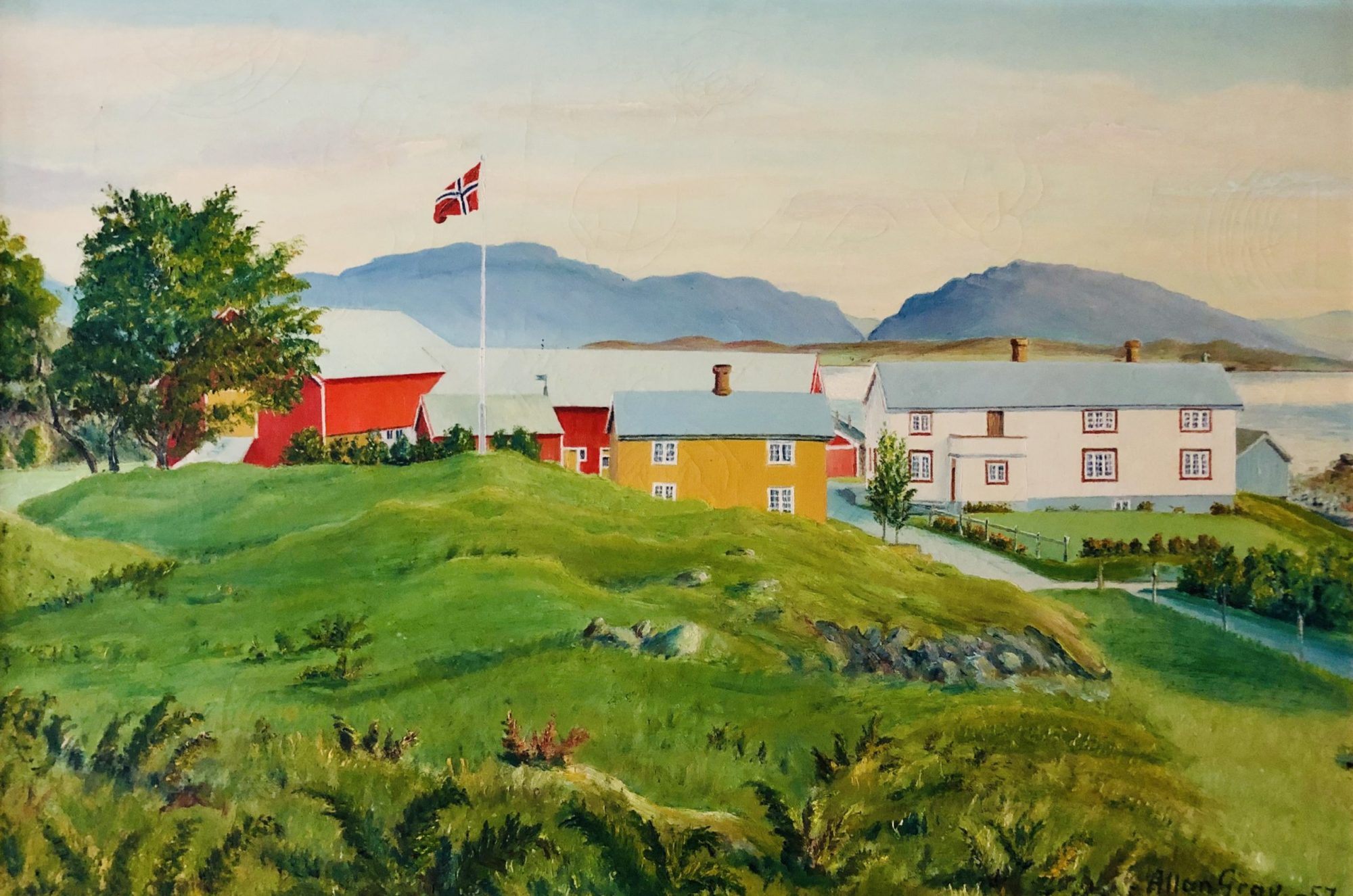
Første kommentar 🥳 fin blogg 👍👍
Tusen takk, Are! Håper du får mye glede av den framover også.
Altaskifer – kanskje det flotteste taket som finnes!
Takk for det, Alf. Egentlig litt rart at det har vært så utbredt her med Altaskifer i gamle dager — det er jo kjempelangt til Alta.
Kjempefint tak 👍🏻
Tusen takk, Marit! Mye jobb, men veldig vakkert.